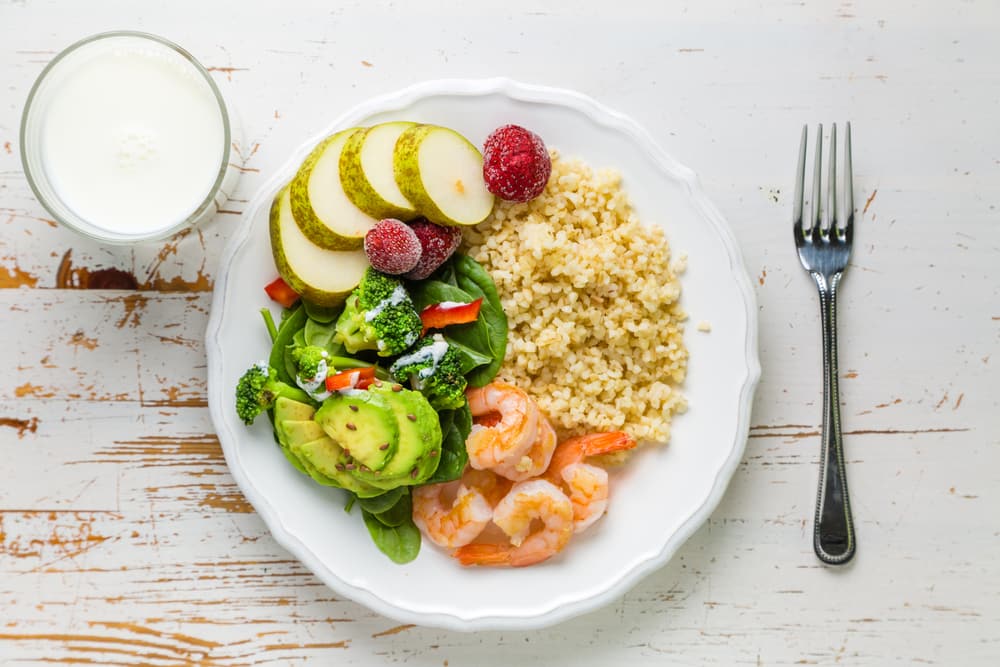How Many Portions Are Enough in a Day?

Not only the types of food you have to pay attention to, the amount of food you eat is also important. The type and amount of food you eat affects how many calories you enter your body. Sufficient amounts or portions of food can help you maintain your weight. So, what about your food portions so far? Is it enough or is it the advantages / disadvantages?
How many portions are enough for one meal?
Meal portions are how much food you eat in one meal. How many portions should be sufficient for each person must be different. This depends on your calorie needs per day and your eating habits.
So, to find out whether your portion of the meal so far is sufficient or excess / lacking may be a bit difficult. Your calorie needs per day must be calculated in advance, which is adjusted to your activity level.
You can calculate the number of calories yourself using the calculation of the ideal body weight through Broca’s formula. You can calculate Broca’s formula by:
Ideal body weight = (height – 100) – 10% (for men <160 cm and women <150 cm, not reduced by 10%).
After getting the ideal body weight, calculate your basic calories per day, for men 30 cal per kilogram of ideal body weight, while women 25 cal per kilogram of ideal body weight.
However, to make it easier for you to figure out how you should eat each day (the average person), these guidelines may help.
Vegetable and fruit servings
Consumption of vegetables and fruit should be at least five servings per day (combined). One serving of vegetables is usually stated in glass units. Where, one glass is approximately as much as 100 grams. Meanwhile, one portion of fruit is usually stated in fruit units or slices, for example 1 serving of apples is 1 fruit or 1 serving of melon is 1 slice.
This depends on the size of each fruit, so the portions of each fruit are certainly different. Usually 1 small serving of fruit can include several fruits, and 1 large serving of fruit only covers ½ of the fruit or 1 slice.
Serves of carbohydrates
Consume food sources of carbohydrates, such as rice, noodles, bread and potatoes, as much as 3-4 servings. One serving of rice is as much as 100 grams or 1 spoon of rice. One serving of noodles is 200 grams, one serving of bread is 3 slices, and one serving of potatoes is 2 medium pieces.
Portion of protein
Consume 2-4 servings of animal protein sources (such as chicken, meat, eggs, and fish) and vegetable protein sources (such as beans, tofu, and tempeh) (combined). Try to eat at least 2-3 servings of fish per week.
One serving of chicken is 1 piece or about 40 grams, one serving of beef is 1 piece or about 15 grams, and one serving of fish is about 30-40 grams or 1 piece. Meanwhile, a serving of beans is usually about 2.5 tablespoons (25 grams), a serving of tofu is 2 pieces (100 grams), and a serving of tempeh is 2 pieces (50 grams).
How do you know if you have enough to eat?
Remember, the guidelines above do not include the snacks or other things you eat. So, so that your food intake does not exceed the calories needed by the body, you must also control the portion of snacks, in addition to main meals.
In packaged foods, the nutritional content is usually listed in each serving of the food. So, you can estimate how many calories you eat when you eat these packaged foods.
Another way to find out how much food is getting into your body is to record the foods you eat (such as keeping a food diary). You can record what you eat, how much, and when you eat. This is very helpful in knowing whether the food you are eating exceeds your calorie needs or is still lacking. Keep track of every food you eat, whether it’s a main meal or just a snack.
Hello Health Group and Hello Sehat do not provide medical advice, diagnosis or treatment. Please check our editorial policy page for more detailed information.
(2016). Just Enough for You: About Food Portions | NIDDK. [online] National Institute of Diabetes and Digestive and Kidney Diseases. Available at: https://www.niddk.nih.gov/health-information/weight-management/just-enough-food-portions [Accessed 20 Jul. 2017].
American Diabetes Association. Portion Control, or How Much Food is Enough?. [online] Available at: http://tusd1.org/Portals/TUSD1/District/docs/Dist%20Info/Wellness/PortionControl.pdf [Accessed 20 Jul. 2017].
National Institutes of Health. (2009). Just Enough for You: About Food Portions. [online] Available at: http://www.sjc.cc.nm.us/Documents/AlliedHealth/HHPC/Fitness%20Education/Nutrition/PortionControl.pdf [Accessed 20 Jul. 2017].
Ministry of Health of the Republic of Indonesia. (2014). Regulation of the Minister of Health of the Republic of Indonesia Number 41 of 2014 concerning Guidelines for Balanced Nutrition. Jakarta: Ministry of Health of the Republic of Indonesia.